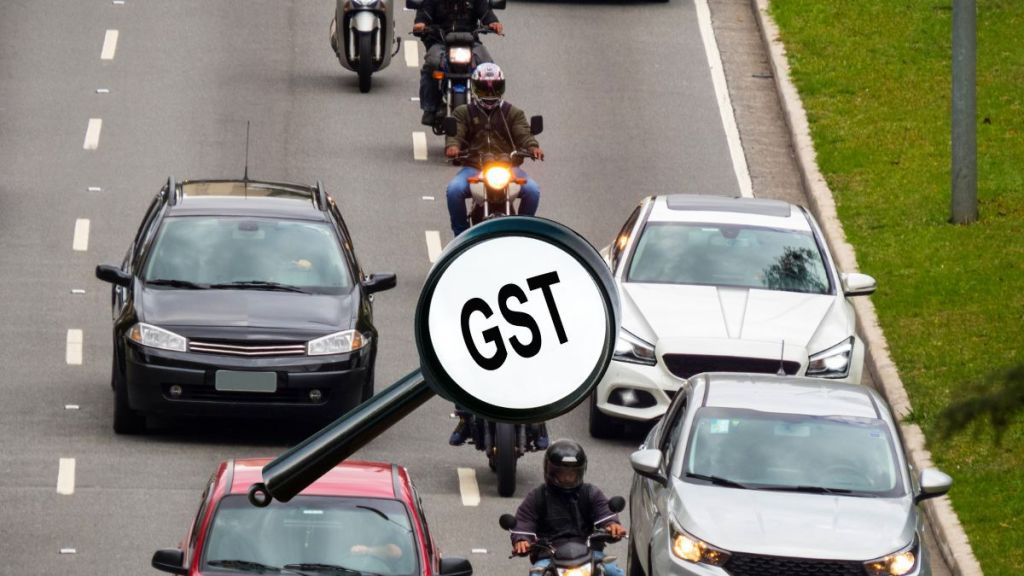There is still no clarity on the exact GST rate structure. Latest reports suggest that the auto sector could potentially see a reduction in tax rate for small cars and two-wheeler ICE vehicles to 18% (from 28% currently). According to an analysis by Nomura this could be good news for key OEMs. M&M, Maruti Suzuki, Ashok Leyland and TVS Motor have the highest upside potential.
Nomura also highlighted that large cars could see a reduction in tax rates to 40% from 43-50% at the moment. All in all, this is likely to be positive for all segments of vehicles. However, there is a risk, though, that motorcycles of more than 350 cc may see an increase in GST to 40% from 31% (28%+3%).
Nomura expects price cut for key best-sellers
Nomura analysts believe that the reduction in GST may have “multiplier effect on demand for most OEMs in the list of auto sector stocks, implying a 5-10% potential increase in demand.” According to them, several popular models like Brezza, Creta, XUV700, WagonR, Bolero are likely to see sizable price cuts.
They expect that price cuts in key models including:
-WagonR may be cut by 9%
-Bolero by 10%
-Brezza, Creta may see 3% price cut each while
– XUV700 prices may go down by 7%
Nomura calls for faster decision on GST to stem slowdown in sales
In terms of OEMs, Nomura estimates that Maruti Suzuki India has 68% exposure to the small car slab M&M’s exposure is at 52%. In this context they have also included the OEM’s exposure to LCVs for M&M.
“The improved growth outlook should be supportive of improved consumer sentiment,” as per Nomura and they expect wider economic growth, and job creation potential as a result of the GST rate cut.They added that the sales have slowed down substantially in anticipation of the rate cut and have urged the Govt that a “decision should be taken quickly.”
Nomura on proposed GST cut: Impact on four-wheelers to be larger
Nomura’s estimates indicate that the benefit of the proposed rate cuts “is likely to be larger for four-wheelers compared to two-wheelers.”
This is because they expect two-wheelers to face costs related to ABS implementation, “which may shave 50% (Rs 3,000-4,000) off the benefit by next year,” explained Nomura. In this context they believe that the makers of Royal Enfield, Eicher Motors– which already has its portfolio on ABS- may benefit more from GST cut.
Typically, four-wheelers offer higher discounts and “hence have scope to reduce those” if the proposed GST cuts come through, added Nomura.
Their estimates show “100-150 bps margin improvement potential for all OEMs from this move, even if they pass on all the GST benefit in list price reduction.”
Nomura on proposed GST cut: EVs to lose out?
The higher two-wheeler penetration is another key factor to watch, as per Nomura. The 121/1,000 people ratio is expected to peak over the next decade at 30 million. While overall growth may pick up for auto OEMs, Nomura believes that “EV models may lose out. OEMs with domestic exposure are likely to benefit the most.”
“Any big cut in GST may be negative for EV OEMs as the price gap between ICE and EVs could increase,” Nomura added.
In their view, this could push back EV adoption by 2-3 years. They have suggested that this can be “addressed by giving a demand incentive to EVs (such as the PM-Edrive scheme) by 10% of value of the EV cars and two-wheelers to all models, or at least to PLI-compliant models.
How will GST impact auto component makers?
Apart from the OEMs, Nomura expects the domestic auto component makers to benefit from the proposed cuts “in the form of higher volumes. While they will need to fully pass on GST cuts to OEMs, they may enjoy better pricing power in the aftermarket.”
However, the GST cut may lead to some revenue loss. Assuming 10% higher volumes, the loss can be significantly offset, as per Nomura’s calculations.


